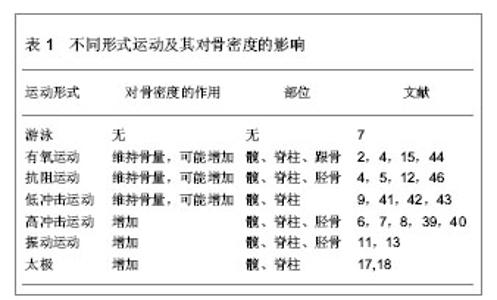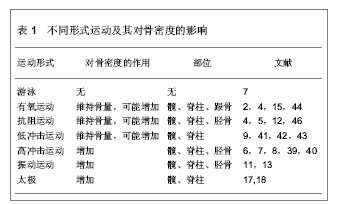| [1] |
Tang Hui, Yao Zhihao, Luo Daowen, Peng Shuanglin, Yang Shuanglin, Wang Lang, Xiao Jingang.
High fat and high sugar diet combined with streptozotocin to establish a rat model of type 2 diabetic osteoporosis
[J]. Chinese Journal of Tissue Engineering Research, 2021, 25(8): 1207-1211.
|
| [2] |
Li Zhongfeng, Chen Minghai, Fan Yinuo, Wei Qiushi, He Wei, Chen Zhenqiu.
Mechanism of Yougui Yin for steroid-induced femoral head necrosis based on network pharmacology
[J]. Chinese Journal of Tissue Engineering Research, 2021, 25(8): 1256-1263.
|
| [3] |
Hou Guangyuan, Zhang Jixue, Zhang Zhijun, Meng Xianghui, Duan Wen, Gao Weilu.
Bone cement pedicle screw fixation and fusion in the treatment of degenerative spinal disease with osteoporosis: one-year follow-up
[J]. Chinese Journal of Tissue Engineering Research, 2021, 25(6): 878-883.
|
| [4] |
Yang Weiqiang, Ding Tong, Yang Weike, Jiang Zhengang.
Combined variable stress plate internal fixation affects changes of bone histiocyte function and bone mineral density at the fractured end of goat femur
[J]. Chinese Journal of Tissue Engineering Research, 2021, 25(6): 890-894.
|
| [5] |
Li Shibin, Lai Yu, Zhou Yi, Liao Jianzhao, Zhang Xiaoyun, Zhang Xuan.
Pathogenesis of hormonal osteonecrosis of the femoral head and the target effect of related signaling pathways
[J]. Chinese Journal of Tissue Engineering Research, 2021, 25(6): 935-941.
|
| [6] |
Xiao Fangjun, Chen Shudong, Luan Jiyao, Hou Yu, He Kun, Lin Dingkun.
An insight into the mechanism of Salvia miltiorrhiza intervention on osteoporosis based on network pharmacology
[J]. Chinese Journal of Tissue Engineering Research, 2021, 25(5): 772-778.
|
| [7] |
Liu Bo, Chen Xianghe, Yang Kang, Yu Huilin, Lu Pengcheng.
Mechanism of DNA methylation in exercise intervention for osteoporosis
[J]. Chinese Journal of Tissue Engineering Research, 2021, 25(5): 791-797.
|
| [8] |
Nie Shaobo, Li Jiantao, Sun Jien, Zhao Zhe, Zhao Yanpeng, Zhang Licheng, Tang Peifu.
Mechanical stability of medial support nail in treatment of severe osteoporotic intertrochanteric fracture
[J]. Chinese Journal of Tissue Engineering Research, 2021, 25(3): 329-333.
|
| [9] |
Zhong Yuanming, Wan Tong, Zhong Xifeng, Wu Zhuotan, He Bingkun, Wu Sixian.
Meta-analysis of the efficacy and safety of percutaneous curved vertebroplasty and unilateral pedicle approach percutaneous vertebroplasty in the treatment of osteoporotic vertebral compression fracture
[J]. Chinese Journal of Tissue Engineering Research, 2021, 25(3): 456-462.
|
| [10] |
Zhu Yun, Chen Yu, Qiu Hao, Liu Dun, Jin Guorong, Chen Shimou, Weng Zheng.
Finite element analysis for treatment of osteoporotic femoral fracture with far cortical locking screw
[J]. Chinese Journal of Tissue Engineering Research, 2021, 25(24): 3832-3837.
|
| [11] |
Feng Guancheng, Fang Jianming, Lü Haoran, Zhang Dongsheng, Wei Jiadong, Yu Bingbing.
How does bone cement dispersion affect the early outcome of percutaneous vertebroplasty
[J]. Chinese Journal of Tissue Engineering Research, 2021, 25(22): 3450-3457.
|
| [12] |
Liu Chang, Li Datong, Liu Yuan, Kong Lingbo, Guo Rui, Yang Lixue, Hao Dingjun, He Baorong.
Poor efficacy after vertebral augmentation surgery of acute symptomatic thoracolumbar osteoporotic compression fracture: relationship with bone cement, bone mineral density, and adjacent fractures
[J]. Chinese Journal of Tissue Engineering Research, 2021, 25(22): 3510-3516.
|
| [13] |
Cai Qunbin, Yang Lijuan, Li Qiumin, Chen Xinmin, Zheng Liqin, Huang Peizhen, Lin Ziling, Jiang Ziwei .
Feasibility of internal fixation removal of intertrochanteric fractures in elderly patients based on fracture mechanics
[J]. Chinese Journal of Tissue Engineering Research, 2021, 25(21): 3313-3318.
|
| [14] |
Liu Yulin, Li Guotai.
Combined effects of hyperbaric oxygen, vibration training and astaxanthin on bone mineral density, glucose metabolism and oxidative stress in diabetic osteoporosis rats
[J]. Chinese Journal of Tissue Engineering Research, 2021, 25(20): 3117-3124.
|
| [15] |
Lin Haishan, Mieralimu Muertizha, Li Peng, Ma Chao, Wang Li.
Correlation between skeletal muscle fiber characteristics and bone mineral density in postmenopausal women with hip fractures
[J]. Chinese Journal of Tissue Engineering Research, 2021, 25(20): 3144-3149.
|

